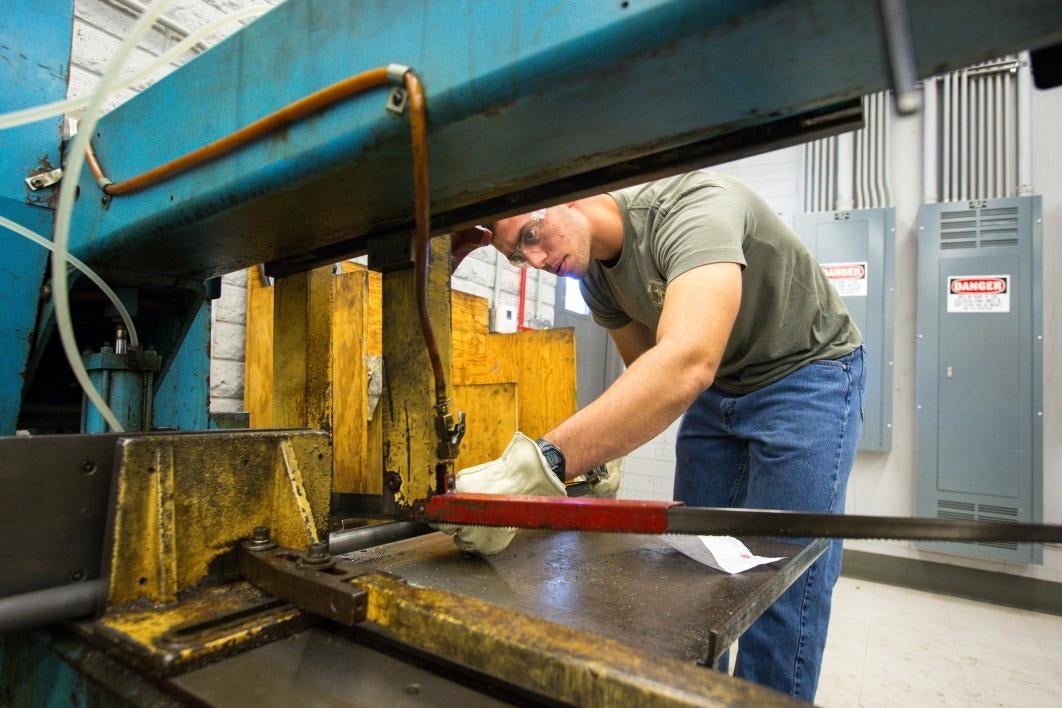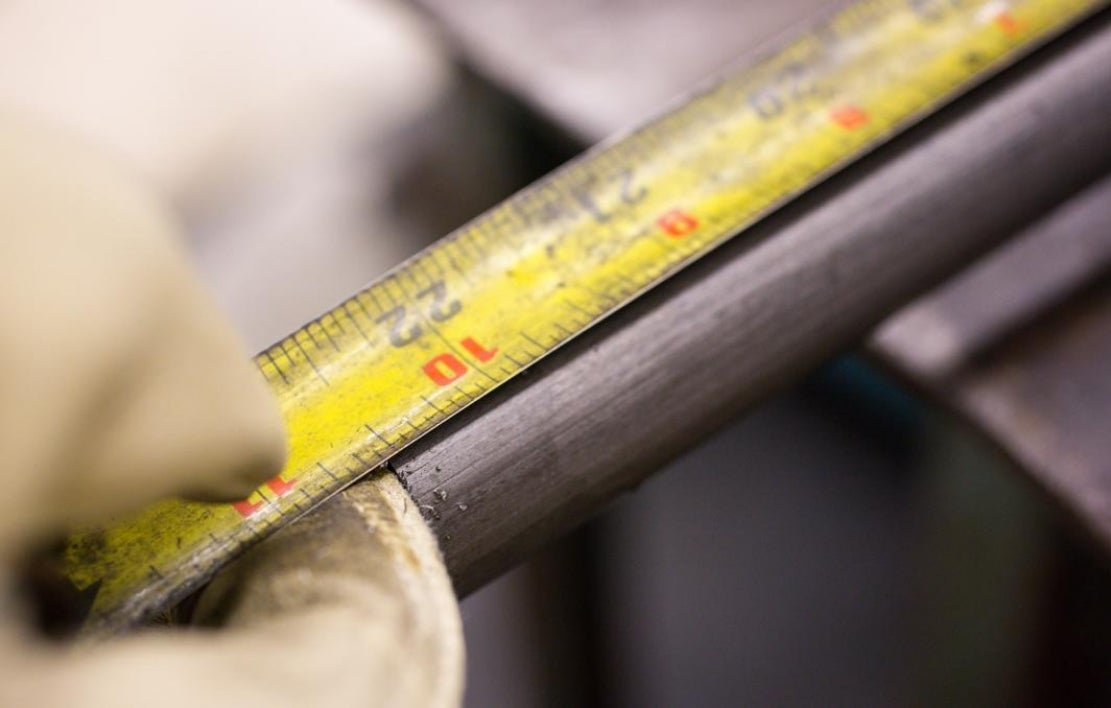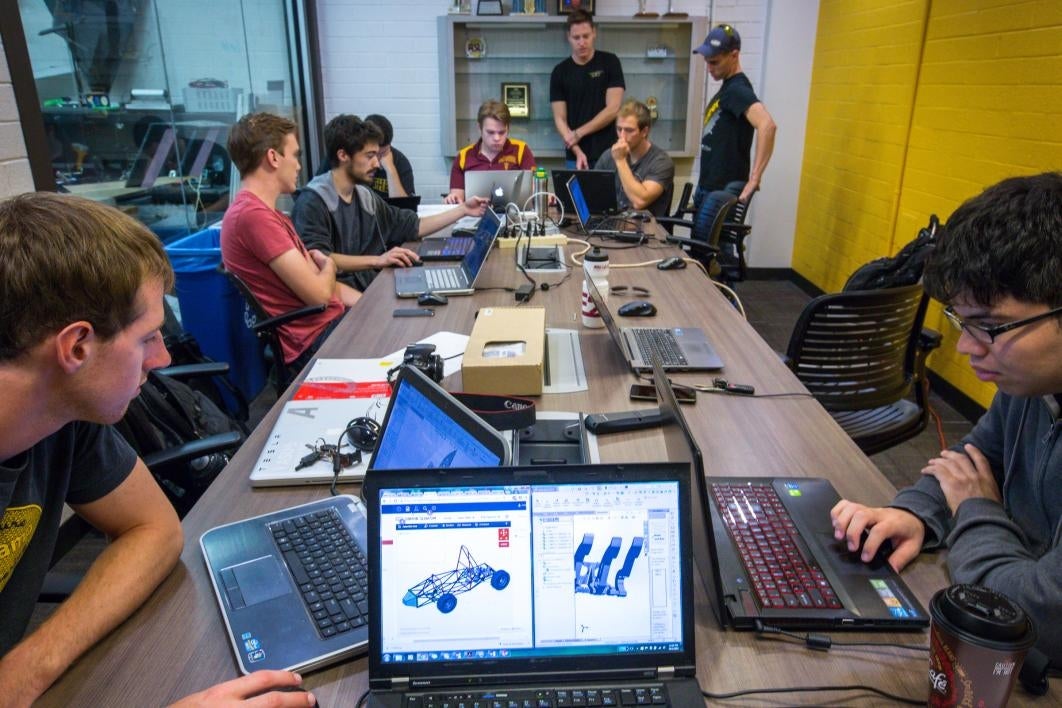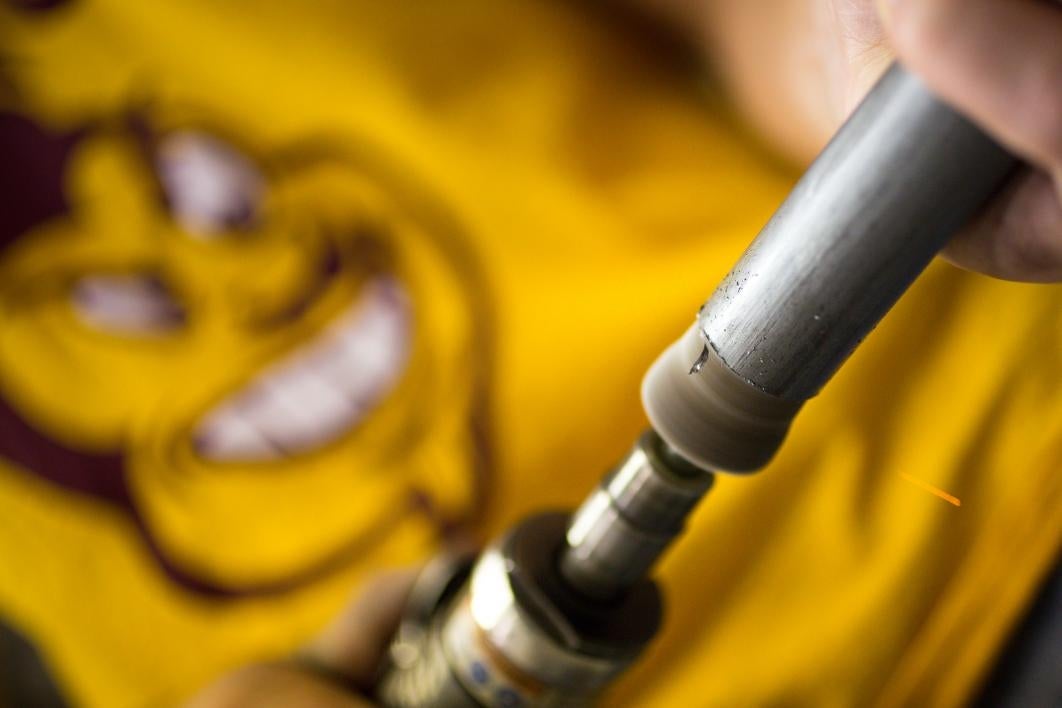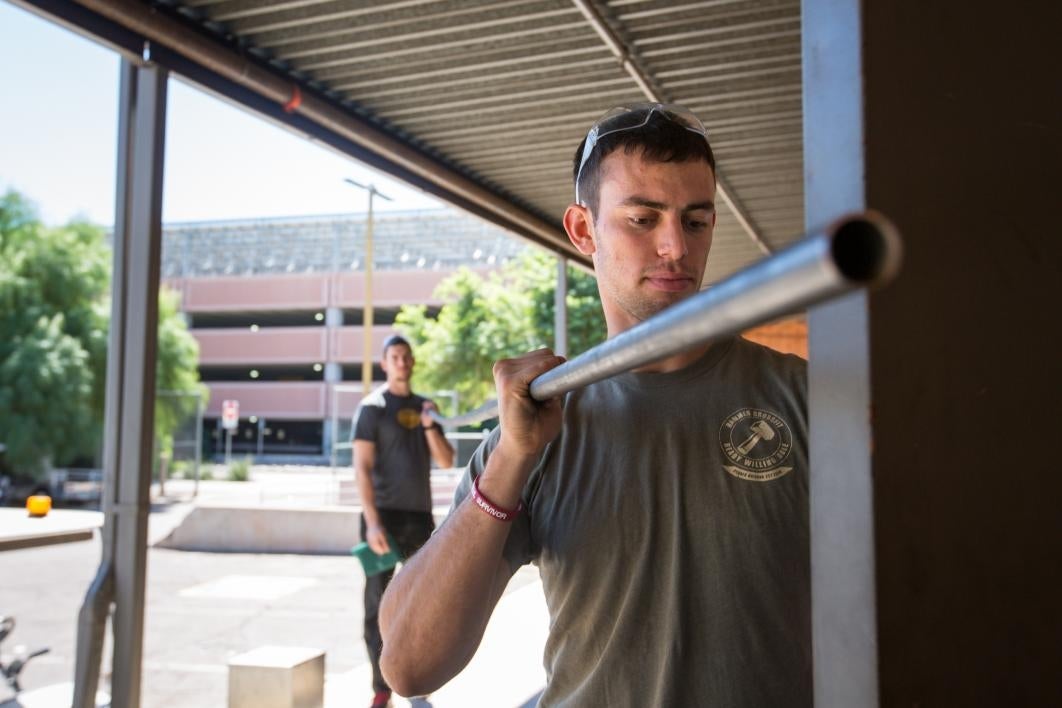Tempe Drift: How an underdog student engineering team is building a race car from the ground up

On a mid-September Saturday morning, a band of engineering students gathered in a noisy shop on Arizona State University’s main campus to begin building a race car.
They don’t have much money: $3,000 in the bank. Last year’s car cost $24,000 to build, less than half the cost of a Formula One steering wheel.
The university donates shop space and some faculty advisers. For design, management and money, “we’re on our own,” said chief engineer Wes Kudela.
But whatever else they lack, the 110 members of ASU’s Formula SAE team — students in the Ira A. Fulton Schools of Engineering — have passion in spades.
“I want everyone in here to learn engineering,” Kudela said. “I love it, and I want to give that opportunity to other people.”
Some of the students in the shop have come to ASU specifically to join this club.
Formula SAE is a student design competition organized by the International Society of Automotive Engineers(now known as SAE International). Competitors are expected to operate as car manufacturers. They have to master all aspects of business: research, design, manufacturing, testing, developing, marketing, management and fundraising.
Every single step is documented, down to how many times a single bolt is turned. “If you don’t document it, you lose points,” Kudela said.
Competition is much more than show up, win and bring home a trophy. Cars are judged in eight events: design; cost and manufacturing analysis; presentation; acceleration; skidpad; autocross; fuel economy; and endurance.
The concept behind the competition is that a fictional manufacturing company has contracted a design team to develop a small Formula-style race car. The prototype is to be evaluated for its potential as a production item. The target consumer is the non-professional weekend autocross racer. Each team designs, builds and tests a prototype based on a series of rules.
Ninety percent of the car will be built in-house. Some machining and laser cutting will come from outside fabricators. It will be a Formula-style car, not a Formula One car. The similarities are that both are single-seat cars, built to a specific set of rules.
There are three differences: ASU’s car will be smaller. It will not cost $2.6 million, the typical cost for a Formula One car, according to Autoweek. And, Kudela said, “the performance is not anything like a Formula One car,” which can hit speeds up to 220 miles per hour.
There is a fourth difference. This team isn’t out for money, prestige or laurels. They want better performance and a more functional team than last year.
“I want everyone on this team more successful as an engineer,” said Kudela. He interned last summer at Tesla and credits his participation in Formula SAE with earning that internship. “It’s not they come once, get bored and leave. Our goal is to take this momentum from the last build and go forward. Our goal is to keep the team motivated.”
Chrysler, Tesla and Ford all come to ASU to recruit. They will also be at the FSAE race in Lincoln, Nebraska, in June.
“These companies come to competition and see how your school does,” Kudela said.
Many companies won’t hire engineering grads unless they joined FSAE. Some club alums are now engineers at Tesla. “It’s a leg up,” Kudela said.
Taser, the electrical-weapon company, donated the $3,000 the team currently has. Sponsors can range from family members who donate a few hundred bucks to Chrysler ($12,000 last year) to local businesses like Industrial Metal Supply, which donated chromoly steel for the chassis.
“One of the things we struggle with is building the business side of the club,” said team manager Troy Buhr. The team will need more than the $24,000 it spent last year. All members of the team — which maintains a Facebook page — are responsible for approaching potential sponsors. “We want to make sure you know how to communicate thoroughly,” Buhr said.
“We want to make sure we’re not keeping engineers in the corner,” Kudela added.
Eight different teams collaborate on the project: engine, vehicle dynamics, drive, aero, brakes, data acquisition, systems and computer-aided design. Each subteam has a leader and a vice leader. They are responsible for recruiting members within the club to their subteam. The leader keeps the spreadsheet organized.
“You have areas of responsibility,” Kudela said. “It keeps people accountable.”
Last year they moved too slowly and didn’t have enough time to test the car. This time, they want to finish the build by January so they can begin testing and improving the car. They designed and built a new suspension over the summer and started fabricating the chassis, which they want complete by Homecoming. Now they’ll start designing and engineering all the other components on the car in preparation for the mid-June race.
“We’ll have a semester to fix it and make it better,” Kudela said. “There is a ton of engineering going into fixing the problems with this (last year’s car).”
The club has been around since the early 1990s. Last year, ASU came in 63rd out of 122 teams.
“Now we want to make the car better,” Buhr said.
“That is the challenge,” Kudela said. “You sit in front of judges and say this is why you should buy our car.”
The road to Lincoln begins.
Editor’s note: This is the first installation in a yearlong series. Look for the next story Nov. 5.
More Science and technology

ASU-led space telescope is ready to fly
The Star Planet Activity Research CubeSat, or SPARCS, a small space telescope that will monitor the flares and sunspot activity of low-mass stars, has now passed its pre-shipment review by NASA.…

ASU at the heart of the state's revitalized microelectronics industry
A stronger local economy, more reliable technology, and a future where our computers and devices do the impossible: that’s the transformation ASU is driving through its microelectronics research…

Breakthrough copper alloy achieves unprecedented high-temperature performance
A team of researchers from Arizona State University, the U.S. Army Research Laboratory, Lehigh University and Louisiana State University has developed a groundbreaking high-temperature copper alloy…


